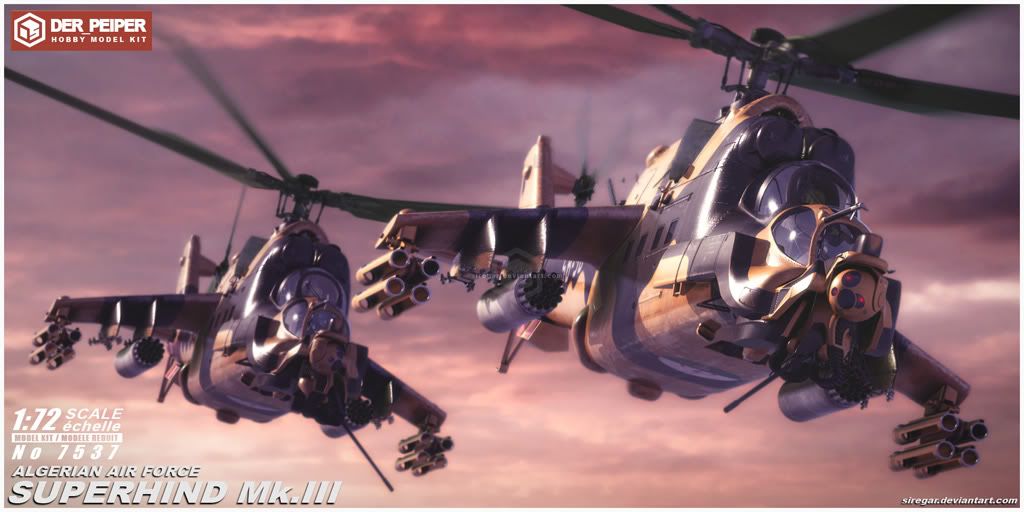About the "Heat signature" issue, I never made a claim that the signature effected its performance, only that it made it more susceptible to heat-seekers. The war in Afghanistan showed how dangerous MANPADS could be to helicopters. Although there were manpads earlier than the FIM-92, (like the SA-7 and Rockeye) they were crude compared to the Stinger. The MI-8 and MI-24 had the misfortune of being the prime target of the worlds first truly effective shoulder fired SAM and since the MI-24 were unprepared to deal with the threat they suffered heavy losses as a result. The MI-24 wasn't a bad design, it would have been a fantastic tool in Vietnam or Korea. But by its true trial by fire (Afghanistan) it was outdated.
The AH-64 was designed 8 years after the MI-24 specifically with MANPADS in mind (lessons learned from Vietnam). This is reflected in the design, AH-64 carried flares dispensers, integrated thermal suppressors and as I mentioned pointed the engine exhausts upwards. Later variants of the MI-24 added these systems, though heat seekers still remained a problem.
I grant you that any system can be vulnerable to anything given the circumstances, but I think that the fact that the MI-24 is currently being replaced with MI-28 and KA-50s while the AH-64 is still in front-line service speaks as to which chopper design had the greater life longevity.
You make a point about the ability to both carry troops and support them, but I believe the Russians consider the concept idea of a hybrid transport-gunship to be a failure. They have abandoned the idea, as their latest gunships like the Havoc, Hokum, and Black Shark have all been purpose built gunships, as well as their newer dedicated transport helicopters.
Not that strange that MI-24 early models weren´t prepared to meet Stingers.
Nothing during that timeframe were.
The aircraft is older than the Apache but are just now being phased out.
Apache would have been if the Comanche had worked out and not turned rediculously expensive.
You adapt your new aircraft to be able to defeat the enemy,s known and guesstimated capabilities during it´s servicelife.
When MI-24 were on the drawingboard the Stinger wasn´t.
(First one fired in anger scoring a hit were in The Falklands by the twentytwo boys).
The Apache might be almost bulletproof, but when subjected to an oldschool ambush in the air over Iraq the thing proved that HMG and AKAN fire are dangerous enough for Helos even today (as were also proved in Sammyland by the Hawks).
Thus I do NOT agree with your assesment that you can draw the conclusion wich is the better aircraft from that the Apache are still on the frontlines.
It should be for another 8 years to compare to the Hind.
Point taken that the Russians felt the combined transport/gunship concept where faulty, but I think the concept is faulty with Russian doctrine and tactics.
The Russian tends to see combat as a numbers game at a higher grade then western forces.
Thus they might have deemed the ferrying capabilities of the Hind unsatisfactory.
Western SF teams does not have that problem on patrol level.
(Where the heavyweapons capability would count the most after incursions).
In conclusion.
Nothing strange about you changing out your airfleet after a period of years, everyone does that.
IMHO the Russians got it right when it comes to Helos, the problem were more doctrine and TTP,s.
//KJ.



